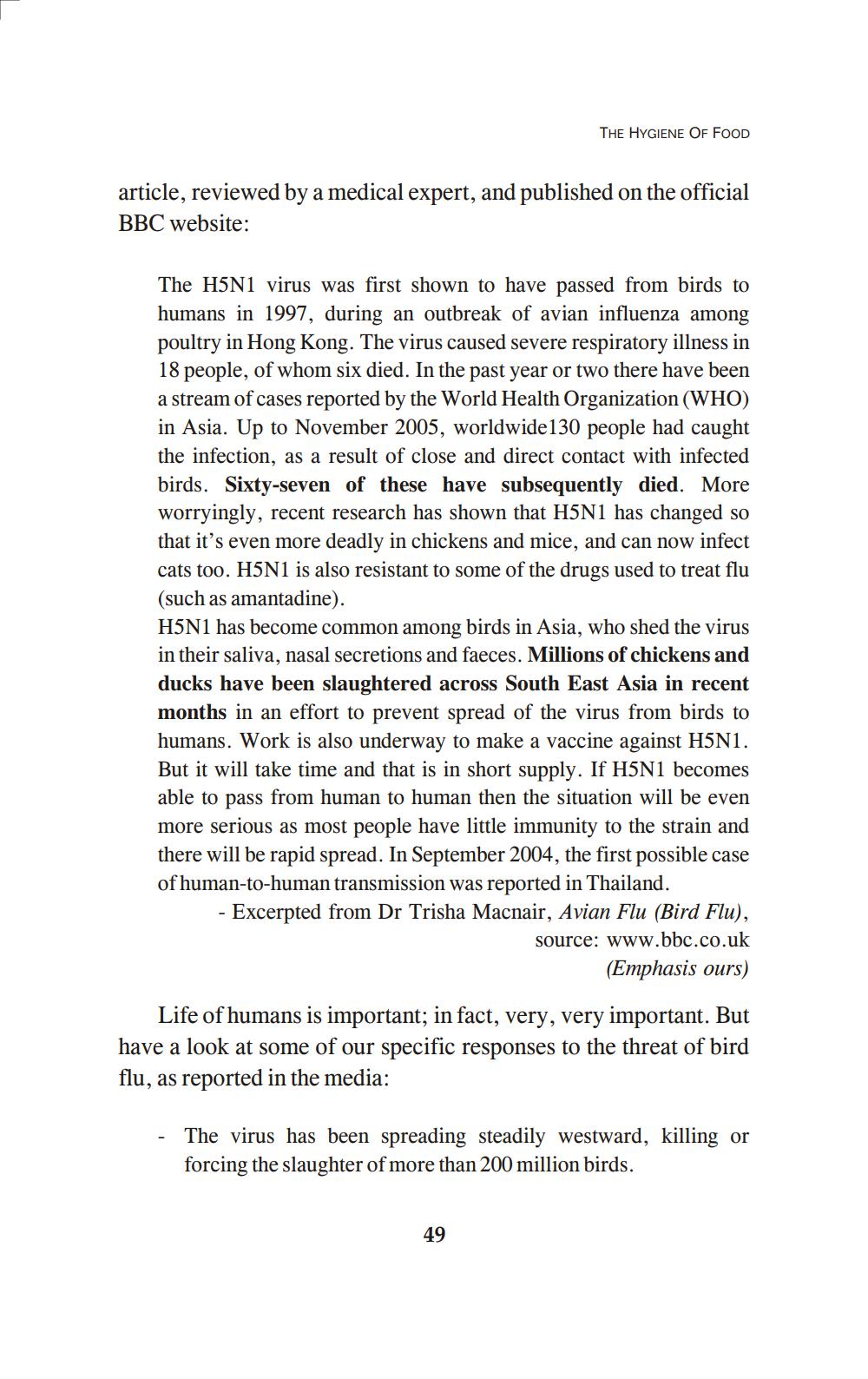________________
THE HYGIENE OF FOOD
article, reviewed by a medical expert, and published on the official BBC website:
The H5N1 virus was first shown to have passed from birds to humans in 1997, during an outbreak of avian influenza among poultry in Hong Kong. The virus caused severe respiratory illness in 18 people, of whom six died. In the past year or two there have been a stream of cases reported by the World Health Organization (WHO) in Asia. Up to November 2005, worldwide 130 people had caught the infection, as a result of close and direct contact with infected birds. Sixty-seven of these have subsequently died. More worryingly, recent research has shown that H5N1 has changed so that it's even more deadly in chickens and mice, and can now infect cats too. H5N1 is also resistant to some of the drugs used to treat flu (such as amantadine). H5N1 has become common among birds in Asia, who shed the virus in their saliva, nasal secretions and faeces. Millions of chickens and ducks have been slaughtered across South East Asia in recent months in an effort to prevent spread of the virus from birds to humans. Work is also underway to make a vaccine against H5N1. But it will take time and that is in short supply. If H5N1 becomes able to pass from human to human then the situation will be even more serious as most people have little immunity to the strain and there will be rapid spread. In September 2004, the first possible case of human-to-human transmission was reported in Thailand. - Excerpted from Dr Trisha Macnair, Avian Flu (Bird Flu),
source: www.bbc.co.uk
(Emphasis ours)
Life of humans is important; in fact, very, very important. But have a look at some of our specific responses to the threat of bird flu, as reported in the media:
- The virus has been spreading steadily westward, killing or
forcing the slaughter of more than 200 million birds.
49




